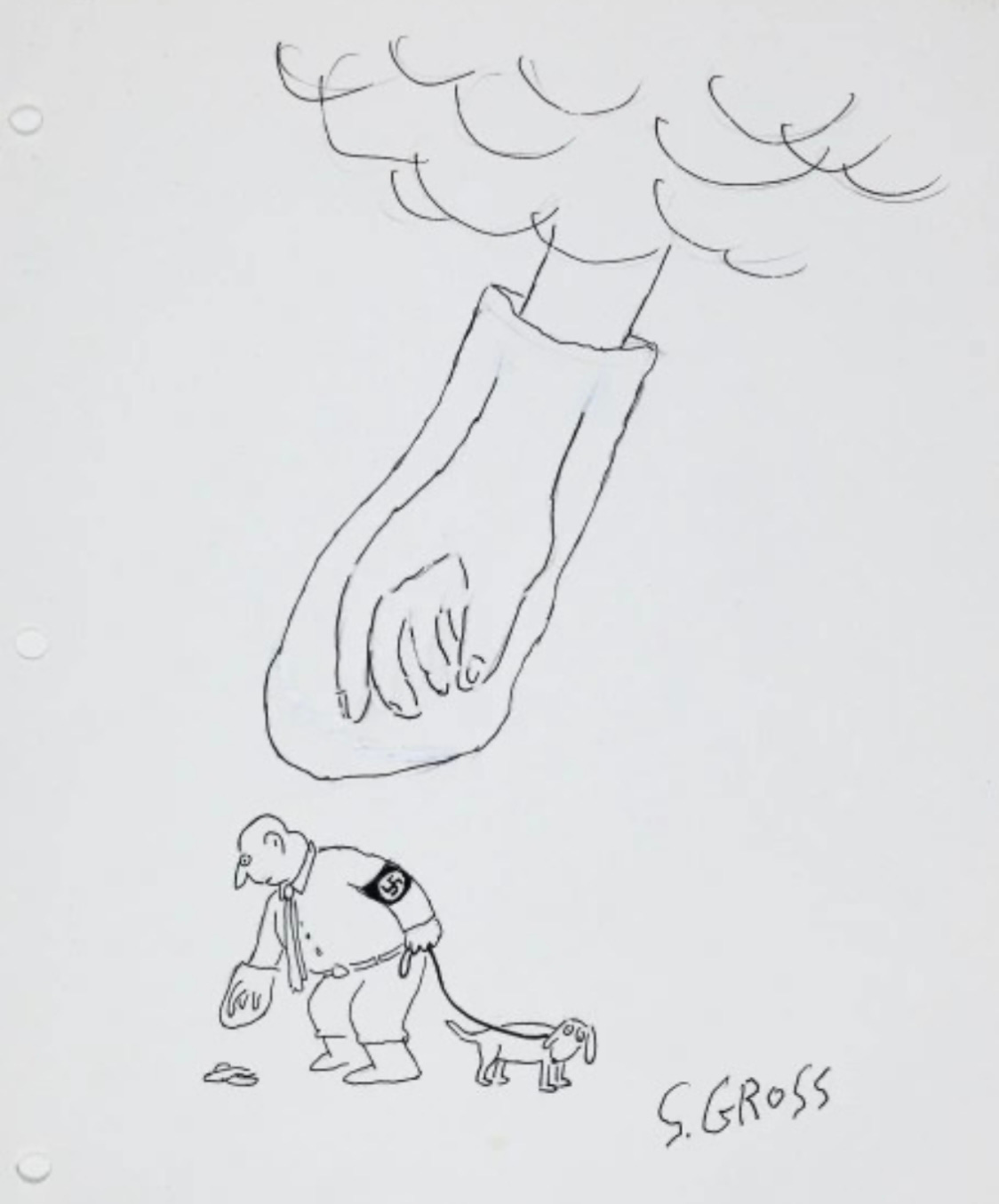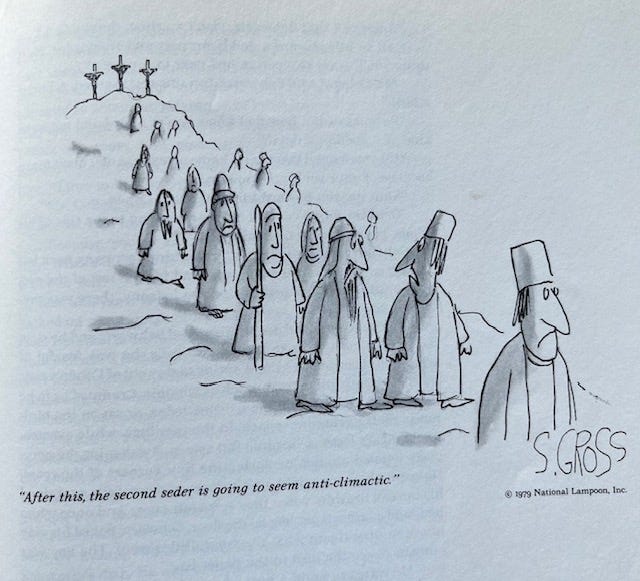‘Gross’ In Name And Humor
My favorite cartoonist, S. Gross, died May 6 at 89. His work was sometimes shocking, sometimes gentle – and always funny.
I never met Sam Gross but I’ve been a big fan of his quirky sense of humor for decades.
The Jewish native of the Bronx described himself as more of “a gag writer” than an artist, but he produced an estimated 34,000 cartoons during a career that began in 1953, with his first published work in Saturday Review, and lasted until the end of his life. New Yorker cartoon editor Emma Allen wrote in the magazine that “just last week a cartoon he’d submitted made me laugh so hard” during a meeting with editor David Remnick “that we had to pause proceedings while I collected myself.
“To the end,” she wrote, “Sam was obscenely funny.”
Most of the dark humor cartoons appeared in the National Lampoon – about 400 of them – and often dealt with religion, race, sex and disabilities – including animal disabilities. One of Gross’s most famous Lampoon cartoons, published in 1970, showed a couple dining at a classy restaurant. A sign on the wall reads: “Try our frogs’ legs,” and the couples’ eyes are looking down on the floor to an amputee frog sadly rolling out of the kitchen in a tiny wheelchair.
“Sam’s genius was a kind of radical honesty which led him to places others would not go,” wrote Michael Gerber, publisher of a humor magazine, American Bystander.
One of several book collections of Gross’s work is “We Have Ways of Making You Laugh: 120 Funny Swastika Cartoons.” (Gross insisted that he got more complaints from his book on teddy-bear cartoons.)
Gross was able to reach mainstream society, too, primarily through The New Yorker, where hundreds of his cartoons appeared. A favorite is of a cow and a calf watching another cow jump over the moon and the caption reads: “Son, your mother is a remarkable woman.”
Fiercely independent, Gross said In a 2011 interview with The Comics Journal, ”My work hasn’t changed because of The New Yorker. I don’t do things for The New Yorker. I do things for me.”
He was known as a strong advocate of cartoonists being paid fair value for their work. And though friends said he could be cantankerous at times, he also had a gentler side, and was widely respected by his colleagues for his talent.
Bob Mankoff, former cartoon editor of The New Yorker who knew and worked with Gross for many years, told The New York Times that Gross was “in the pantheon” of the greatest contemporary cartoonists. “No one has ever done funnier cartoons than Sam Gross.”
The Big Book of Jewish Humor published several Gross cartoons that displayed memorable examples of the genre. Bill Novak, co-editor of the book, told me this week that in 1980 he brought his two young sons to New York with him to meet Gross because they appreciated comedy and he wanted them to meet “a great comic mind.
“His face reflected his personality – unshaven and prickly,” Novak recalled. “He wasn’t warm and fuzzy, but he was nice to the kids and you could tell he had a big heart.”
Perhaps the best way for me to honor Sam Gross is to offer a sampling of the scope of his work.
Hope you enjoy.









